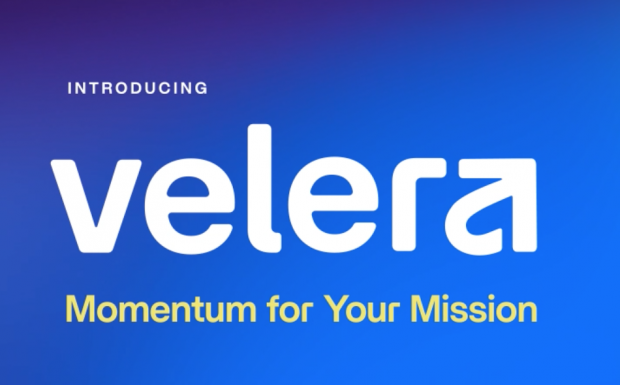WASHINGTON — As liquidity has tightened over the last couple ofyears with savings at record lows and loans at record highs, creditunions are increasingly looking to their Federal Home Loan Banks tofund their mortgage lending.
|Credit unions have increased their business with the banks from$9.6 million in advances at mid-year 2004 to $16.3 million as ofJune 30, 2006. “Over that time period, we've seen pretty strongmortgage demand,” CUNA Senior Economist Steve Rick commented.Combined with the slowest savings growth, credit unions need tolook elsewhere to fund the loans.
|“The benefits to the credit unions is, one, it keeps cost offunds relatively low…and second, to minimize interest rate risk,”he said.
|Pricing was key in Charter Oak Federal Credit Union's decisionto borrow $15 million from the FHLB Boston. “We've been a member atleast for 15 years though not a very active member until veryrecently. We've had a need for funds. We certainly would rather[use the corporate system] but, at least the ones we deal with,have been significantly higher,” Charter Oak Chief FinancialOfficer Brian Orenstein said. The corporates Charter Oak works withhave been 30 to 50 basis points higher than the FHLBs, which addsup when you're talking about $15 million, he explained.
|But “competitive” pricing is relative, Arkansas Federal CreditUnion CEO Larry Biernacki explained. Some are willing to pay a fewextra basis points to keep the funds within the credit unionmovement. He added that he has even seen some corporates beat theFHLBs. “They don't have the same dog in the hunt,” Biernackiemphasized. “The Federal Home Loan Banks do mortgage funding,period.”
|Biernacki knows lending having run the lending department at SanAntonio Federal Credit Union–which was about 130% loaned out whenhe left–prior to joining Arkansas a little over a year ago; he isalso a reformed savings association executive. His credit union isa member of the FHLB of Dallas. The advantage he explained of theFHLBs is getting the money in advance of making the mortgages,which credit unions can match to their own mortgages, cutting downon interest rate risk.
|“The big risk is if rates fall dramatically,” Biernacki said.Then, the credit union can be stuck with a lot of long-term moneyit is borrowing at a higher than profitable rate. So, he said,“You're looking for trends and to continue to meet the need foryour members.” Arkansas FCU has about $10 million in advance fromthe FHLB of Dallas to fund a few months of his credit union'smortgages.
|“One day, we probably will [move away from the FHLB]. We'dcertainly love to replace these borrowings with member shares,”Orenstein commented. However, he added that he does not see thathappening in the near-term.
|Charter Oak holds about $1 million in stock in the bank at ayield of around 5.5% now, according to Orenstein.
|“We certainly utilize our corporates for short-term [lending],”66 Federal Credit Union CEO Kelly Diven said. “We also have somesecured loans but as far as mortgages, the Federal Home Loan Banksseem to have the expertise.” According to the Federal Home LoanBank Topeka, 66 FCU has been a member since 1997.
|Diven explained that the $402 million credit union's totaladvances from the FHLB are about $15 million right now and thecredit union holds $1.4 million in shares, which is just a bitabove the minimum required. He also said that their “programs areeasy to adopt.”
|Orenstein said some in the credit union movement might notapprove of the FHLBs because of the “bank” in their name. “We don'tfeel that way,” he said. “It's not a competitor of ours.” MembersOnly
|The Federal Home Loan Bank Act of 1932 established the FederalHome Loan Bank System as a government sponsored enterprise tosupport mortgage lending and related community investment followingthe Great Depression, according to the Federal Housing FinanceBoard's Web site (www.fhfb.gov). It is comprised of 12 Federal HomeLoan Banks regulated by the FHFB, and boasts more than 8,000 memberinstitutions. Each bank is a separate, government-chartered,member-owned corporation. FHLB members include thrift institutions,commercial banks, credit unions, and insurance companies. Afinancial institution joins the FHLB that serves the state wherethe institution is headquartered. The statutory requirements tobelong to a FHLB are the following:
|o be duly organized under the laws of any state of the UnitedStates;
|o be subject to inspection and regulation under the bankinglaws, or similar state or federal laws;
|o make long-term home mortgage loans;
|o have at least 10 percent of its total assets in residentialmortgage loans, if it is a federally insured depository institution(community financial institutions which are exempt from thisrequirement);
|o have a financial condition that allows FHLB advances (loans)to be made safely; and
|o have character of management and a home financing policyconsistent with sound and economical home financing.
|Each member of the FHLB is required to maintain a minimum stockinvestment established by each bank, and the sum of the stockinvestment by all members must be sufficient for the FHLB to meetits own minimum capital requirement. –[email protected]
Complete your profile to continue reading and get FREE access to CUTimes.com, part of your ALM digital membership.
Your access to unlimited CUTimes.com content isn’t changing.
Once you are an ALM digital member, you’ll receive:
- Critical CUTimes.com information including comprehensive product and service provider listings via the Marketplace Directory, CU Careers, resources from industry leaders, webcasts, and breaking news, analysis and more with our informative Newsletters.
- Exclusive discounts on ALM and CU Times events.
- Access to other award-winning ALM websites including Law.com and GlobeSt.com.
Already have an account? Sign In
© 2024 ALM Global, LLC, All Rights Reserved. Request academic re-use from www.copyright.com. All other uses, submit a request to [email protected]. For more information visit Asset & Logo Licensing.









